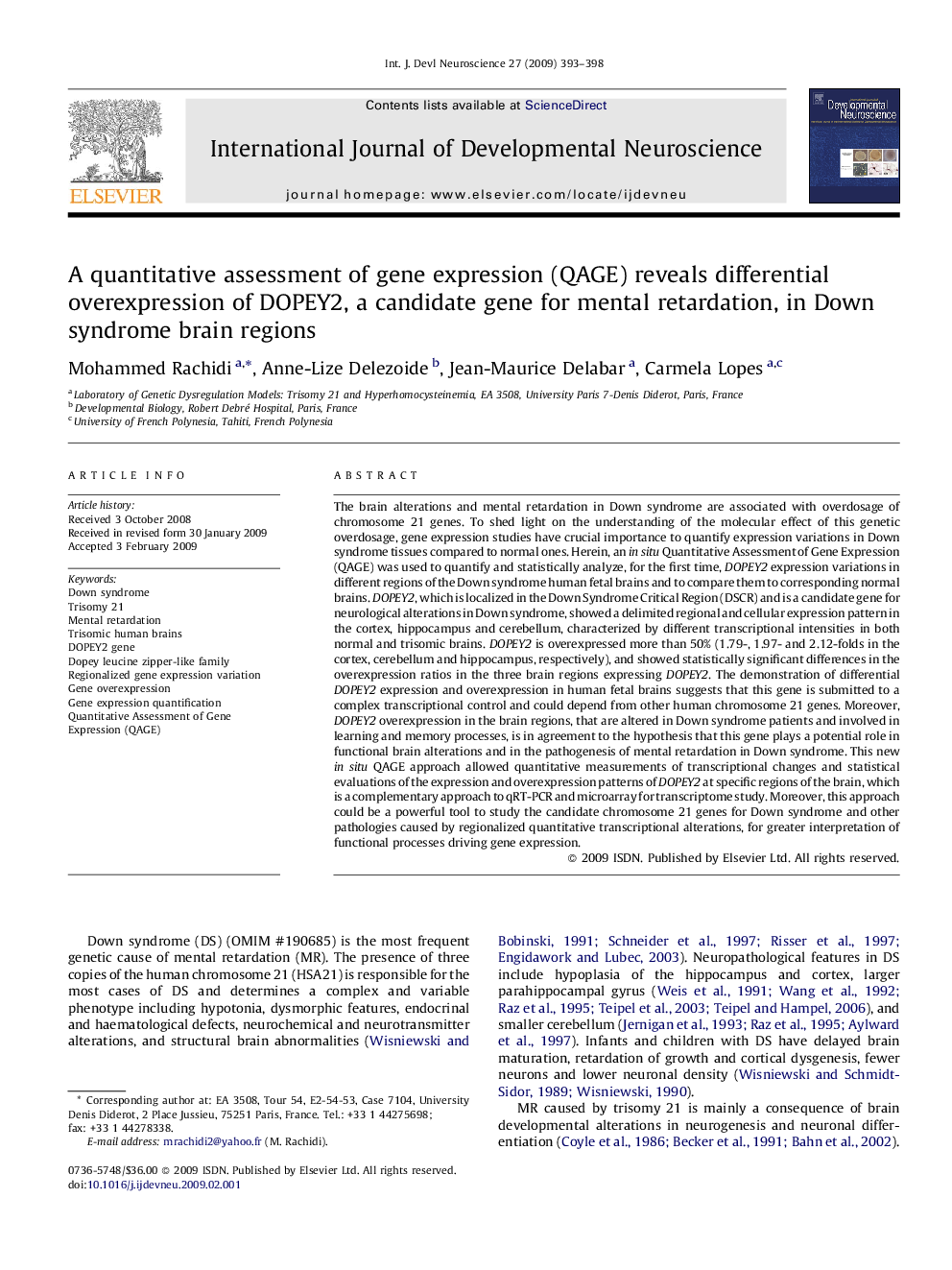| Article ID | Journal | Published Year | Pages | File Type |
|---|---|---|---|---|
| 2786972 | International Journal of Developmental Neuroscience | 2009 | 6 Pages |
The brain alterations and mental retardation in Down syndrome are associated with overdosage of chromosome 21 genes. To shed light on the understanding of the molecular effect of this genetic overdosage, gene expression studies have crucial importance to quantify expression variations in Down syndrome tissues compared to normal ones. Herein, an in situ Quantitative Assessment of Gene Expression (QAGE) was used to quantify and statistically analyze, for the first time, DOPEY2 expression variations in different regions of the Down syndrome human fetal brains and to compare them to corresponding normal brains. DOPEY2, which is localized in the Down Syndrome Critical Region (DSCR) and is a candidate gene for neurological alterations in Down syndrome, showed a delimited regional and cellular expression pattern in the cortex, hippocampus and cerebellum, characterized by different transcriptional intensities in both normal and trisomic brains. DOPEY2 is overexpressed more than 50% (1.79-, 1.97- and 2.12-folds in the cortex, cerebellum and hippocampus, respectively), and showed statistically significant differences in the overexpression ratios in the three brain regions expressing DOPEY2. The demonstration of differential DOPEY2 expression and overexpression in human fetal brains suggests that this gene is submitted to a complex transcriptional control and could depend from other human chromosome 21 genes. Moreover, DOPEY2 overexpression in the brain regions, that are altered in Down syndrome patients and involved in learning and memory processes, is in agreement to the hypothesis that this gene plays a potential role in functional brain alterations and in the pathogenesis of mental retardation in Down syndrome. This new in situ QAGE approach allowed quantitative measurements of transcriptional changes and statistical evaluations of the expression and overexpression patterns of DOPEY2 at specific regions of the brain, which is a complementary approach to qRT-PCR and microarray for transcriptome study. Moreover, this approach could be a powerful tool to study the candidate chromosome 21 genes for Down syndrome and other pathologies caused by regionalized quantitative transcriptional alterations, for greater interpretation of functional processes driving gene expression.
